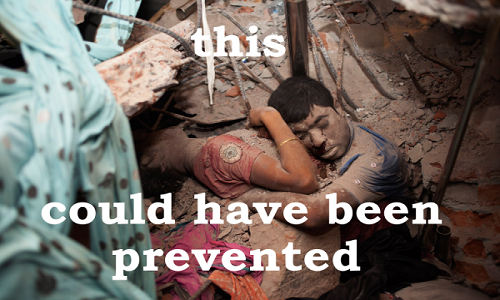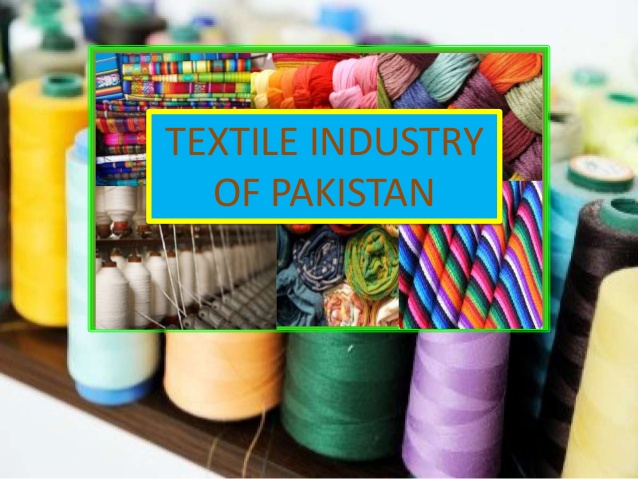Lenzing has launched a tencel fiber indigo chambray collection called Tencel 24: Day into Night. New women’s wear collection is a platform to showcase the breadth and beauty of the most recognizable type of fabrics made out of tencel.
Tencel 24: Day into Night is a new chambray indigo fiber mostly aimed at women’s apparel. The modern slants on tencel is in line with Lenzing’s commitment to fiber innovation and environmental responsibility. The Tencel 24: Day into Night collection is a conscious effort to show that adopting new environmentally responsible laundry techniques does not mean sacrificing aesthetic excellence.
To create the collection’s fresh take on classic product, Lenzing partnered with Jeanologia, a leader in sustainable garment processing technologies. Chambray indigo fabrics made with tencel fiber provide the perfect canvas for these cutting-edge finishing techniques and resulted in aesthetics which previously would not have been possible to achieve.
The Tencel 24: Day into Night collection uses complementary fiber blends across five fabrics made out of tencel fibers. The collection showcases a versatile flow of garment styles from bottoms to tops, casual to formal. Lenzing works closely with other brands across the supply chain to effectively create new fabrics and products and get them to market quickly.
www.lenzing.com/
Indonesia recently hiked import duty on a wide range of manufactured goods. This, the government hopes, will boost the domestic industry given the current economic slowdown. Business groups are elated with this decision. The Indonesian Textile Association (API) chairman, Ade Sudrajat, has stated that a rise in tariff would benefit domestic manufacturing, which would allow fairer competition between locally made and foreign goods.
The effort is to try and harmonise tariffs by imposing higher duties on finished goods and less on raw materials and intermediate goods. The textiles industry faces a great amount of production costs. These are due to higher energy costs and labour wages, which in turn, hamper competition with cheaper exports. Manufacturers in the textile industry have felt the impact of higher costs and weak demand too.
In the first quarter, textile industry cut down production by 20 per cent. Throughout the second quarter, it maintained low output, decreasing factory utilisation. Experts feel the duty rise would help revise the inharmonious tariff system. It could even be advantageous to the local industry by pushing up sales and encouraging production, consequently, lowering costs.
Tirupur's Comprehensive Economic Partnership Agreement (CEPA) with Canada and Australia has not yet been implemented. Now, exporters, from the region have urged the Centre to expedite the process and to conclude CEPA by September this year as committed earlier. A Sakthivel, President, Tirupur Exporters Association (TEA), and other industry representatives recently met Union commerce minister, Nirmala Sitharaman and requested the government to address export-related issues. Ready-made garments worth $16.82 billion were exported in 2014-15, of which, garments worth $7.23 billion were exported to the EU.
Main competition in this region for India is Bangladesh, which enjoys duty-free market in the region due to its least developed country status. The country exported about $15 billion in 2014-15 to the EU market alone, this was more than double of Indian exports.
For India, its main competitors are Bangladesh and Cambodia as they both enjoy the least developed countries tariff treatment. Pakistan and Vietnam also continue to get benefits under the General Preference Tariff (GPT). However, India imposes normal customs duty, about 20 per cent for exports to Canada. CEPA could help exporters compete with these countries effectively.
TE A also stated that it would help to include European Free Trade Association (EFTA) States, such as Norway, Switzerland, Iceland, and Liechtenstein, from country group C to country group A and make them eligible for MEIS reward rate at 2 per cent of FOB value of exports. This would help increase India's competitiveness in these countries.
Since it was established two years ago, Thailand and Vietnam’s strategic partnership is going strong and both the countries noted efficient cooperation. Vietnamese PM, Nguyen Tan Dung’s visit was concluded with a statement of 15 points, along with his counterpart host, Prayut Chan-ocha. Both recently chaired the third meeting of inter-cabinet executives with the participation of the main holders of each country.
The two leaders expressed their common intention that the trade should reach $20 billion by 2020. Dung encouraged Thailand to invest in areas of mutual interest such as maritime tourism, textiles and garments, footwear, agriculture, mechanics and chemistry. Both agreed to strengthen cooperation in labour, culture, sports, education, aquifers, science and technology, and connectivity. They also agreed to open terrestrial and coastal transportation along with Cambodia. Several agreements were signed, including those on recruitment and labour cooperation, and also about bringing together of their respective provinces.
The joint statement also devoted a space towards effective implementation of the Declaration on the Conduct of Parties in the East or South China Sea, the mutual trust there, and the exercise of self-restraint and non-use or threat of force to settle differences.
Darlie Koshy, DG and CEO, ATDC & IAM has been honoured ‘Outstanding Contribution to Education Award 2015’ at the recent World Education Congress (WEC), Mumbai. This award is for knowledge, skill development and leadership for the upliftment of society.
A Doctorate from IIT Delhi in Management and an MBA from CUSAT, Koshy’s ground-breaking contribution to fashion and design education over the past couple of decades has been well-acknowledged by the academia, textile-apparel industry and policy makers. He has many feathers up his cap. Koshy was named twice as one of the 50 educational leaders shaping Indian higher education by ‘Education World’, (in 2006 and 2008). He has been trained at FIT New York in Fashion Management, and is a founding faculty member of NIFT. He was also selected and trained by CBI, Rotterdam, under the ‘Match-maker’ programme on Europe, besides receiving the UNDP Research grant for an International marketing research project on Indian Apparel in the overseas markets.
He has authored a book, ‘Indian Design Edge’, focusing on Indian design. The book traces the evolution of Indian design in the first decade of new millennium and the 21st century, exploring its strong linkages to India’s design heritage, while strategising the need for India to become a ‘creative manufacturer’ to the world.
Human Solutions and the Canadian Apparel Research and Innovation Center Vestechpro, jointly will soon launch a major anthropometric serial measurement survey that will represent many demographic populations in the US and Canada.
There will be 3D body scanners to capture up-to-date body measurements in various postures. This data will eventually be prepared for what the automotive and apparel industry needs. The aim to be inclusive and will include a systematic survey of children aged 6 and above.
‘Size North America’ as the survey is called, is the most extensive serial measurement survey project on the North American continent. The project aims to develop current and representative dimensions for the automotive and apparel industry. People change in body size through the years, and body measurements, proportions and demographic structure have changed quite a bit through decades. This has proved to be a challenge for the apparel industry, which is based on the anthropometric data and standard size tables available at present. Body measurements of children particularly, have been poorly monitored. Size North America aims to capture and document all the changes.
Juveniles too are a focus of this serial measurement survey. Also, a special survey for the age group between 6 and 17 years was never conducted till now in North America. Michael van Genabith, President of Human Solutions of North America, stated that the large-scale survey carried out will not only help them determine the changes in the body measurements and proportions of the North American population, but this data will provide them with relevant information on safety, handling and comfort for product development in the automotive industry.
In a step towards implementing the Economic Community of West African States (ECOWAS) Common External Tariff (CET), the federal government recently delisted textile materials and other items from its import prohibition.
Alhaji Abdullahi Dikko, the Comptroller-General of Nigeria Customs Service (NCS), made this known in Lagos, last month. He said that the textile materials, furniture and other delisted items could now be imported. However, this was subject to the payment of a 35 per cent duty as agreed to by all 16-member countries of the sub-regional body. He added that there was also a provision for an import Adjustment Tax. Dikko was speaking at the launch of the implementation of the CET.
Some adjustments for member countries had to be made with the CET though, said Dikko. There were 97 chapters with the 5,899 tariff headings, but every member country was entitled to three per cent adjustment. This would later translate into 177 tariff headings, which would in turn enable member countries to protect their local industries. The new policy comes into effect in June, as directed by the Federal Ministry of Finance.
A committee has already been set up by the ECOWAS Commission, to monitor the implementation. This would allow it to ensure that there’s adequate compliance so that the provisions are not abused.
Cotton growers in Pakistan are still waiting for the government to decide on the cotton intervention price for the current season. The delay is having a negative impact on them. The National Assembly Standing Committee on Textile Industry and the Ministry for National Food Security and Research had fixed the intervention price of cotton at Rs 3,000 per 40 kg for the financial year 2015-16. The Trading Corporation of Pakistan (TCP), in the second week of November, intervened in the domestic market and started procurement the commodity to stabilise cotton prices. Less than 1,00,000 bales were procured. However, the late decision was not beneficial for farmers and objections were raised after which, cotton procurement was suspended. However, the TCP is likely to be made bound to procure at least two million cotton bales for this year.
It is possible that the government will procure seed cotton instead of lint cotton on an experimental basis, as per the Indian model of cotton procurement. The cotton price may be fixed in between the import and export parity prices. Lint cotton is exported as well as imported by Pakistan and during this course of business activity a lot of revenue is being spent, which may be avoided through the import of long staple cotton, which is required for fine quality cotton in certain textile sectors.

In the wake of the Rana Plaza factory collapse in Bangladesh in April 2013, two major initiatives were launched by major apparel brands, the Accord on Fire and Building Safety in Bangladesh (the Accord) and the Alliance for Bangladesh Worker Safety (the Alliance), to establish mechanisms to prevent fire and safety hazards. A recent report by the Institute of Developing Economies, the largest industry in Bangladesh is ready-made garments (RMG), which comprises nearly 50 per cent of the nation’s economy.
Tragedies trigger safety measures

As there’s a high population density and paucity of land, garment factories are usually built one upon the other and in some cases, in former swamp areas. Thus, while many factory owners share the same building, structural weaknesses tend to be ignored. This was the backdrop of the Rana Plaza disaster, which had five workshops and 2,000 workers.
Rana Plaza was not the only incident to take place due to the fire and safety hazards. A fire in Tazreen Fashions killed 112 workers in November 2012 and in a response, the Ministry of Labour and Employment of Bangladesh, in a joint effort with the International Labor Organization (ILO), coordinated the adoption of National Tripartite Plan of Action on Fire Safety and Structural Integrity in the RMG sector in Bangladesh. This was signed by the government, employers and workers. The Plan was in place even before the Rana Plaza collapse. However, the international community kept questioning fashion brands’ responsibility in the collapse, though brands did not directly own the supplier factories. Media reports and calls for accountability made brands take action and the Accord was launched on May 15, 2013 and the Alliance on July 10, 2013.
The two plans, similarities and differences Both the Accord and the Alliance are based on the National Tripartite Plan and share the same goal of preventing fires and building safety hazards in Bangladesh. However, there are some marked differences between the two. The Accord has over 260 members and includes many top European companies. It is often referred to as a ‘European’ initiative. While, the Alliance consists of 26 North American brands and companies.
A legally binding agreement, the Accord is signed by trade unions and NGOs. Most signatories are from Europe, some from North America and Asia. Four global labour unions and six Bangladeshi labour unions are a part of the Accord, and four international NGOs act as witnesses. Signatory companies commit to the Accord’s activity and obligations for its full tenure. Each company commits to maintaining long-term sourcing relationships with its main suppliers, conditioned upon the supplier’s compliance with fire and building safety measures.

Pakistan's textile industry has lost its viability against regional competitors. Facing tough times the Pakistan Textile Exporters Association (PTEA) has sought government's intervention to tackle the situation. Production costs are at a comparative disadvantage in the country.
It’s tough times for industry

Sohail Pasha, Chairman Pakistan Textile Exporters Association, points out that due to unfriendly and inefficient socio-economic environment, the cost of doing business in Pakistan has soared tremendously. This is because of the constant rise in raw material prices and production inputs that in turn renders the country’s exports uncompetitive in international market. Competing countries have an advantage and are making in-roads in traditional markets, pushing Pakistan textiles out.In Punjab particularly, the textile industry is in a crisis since long and is struggling to survive. High production costs coupled with energy constraints have put a stop to the industrial wheel and disturbed the competitive edge of textile exports. Regional rivals have grown their exports with government’s support, increasing their market share in global textile trade. From 2008 to 2013, Bangladesh achieved 160 per cent growth in textile exports, while China achieved 97 per cent and India, 94 per cent. However, Pakistan’s growth remained at 22 per cent. The statistics show Pakistan’s global textile trade had dropped from 2.20 per cent to 1.80 per cent.
Energy shortage is another major bug bear. Besides, the cost of doing business too has risen and there’s a burden of incidental taxes, provincial cess, inefficiencies in the system and withholding tax regime has made it more difficult for the industry.
Need for government intervention
PTEA chairman feels that the government needs to provide a level-playing field to double existing share in global textile exports. He cited an example such as incentives under technology upgradation fund scheme, focus market scheme, focus product scheme and export goods scheme that are available to Indian textile exporters.
PTEA also urged the government to look into this seriously and step up to save the forex earning sector from disaster. Two main factors as stated, energy crisis and high cost of doing business are keeping back this mainstay of the national economy from optimum growth. Thus, uninterrupted supply of gas and electricity at regionally affordable rates, liquidation of all pending refunds, removal of all innovative taxes and restoration of zero rating regime for textile export chain should be ensured by the government. This would help restore the competitiveness of the industry.
- 1
- 2
- 3
- 4
- 5
- 6
- 7
- 8
- 9
- 10
India’s textile and apparel industry sees mixed fortunes in FY25: Wazir Indices
India’s textile and apparel sector showed mixed results in FY25, with growth momentum visible in sales but profit metrics showing... Read more
UK charts course for circular fashion leadership with new CFIN roadmap
A new landmark report released by the Circular Fashion Innovation Network (CFIN) outlines major strides and a comprehensive roadmap for... Read more
The Unseen Cost of Fashion Returns: Undermining sustainability efforts
Fashion brands are increasingly vocal about their commitment to sustainability, proudly unveiling initiatives centered on recycled polyester, reduced water consumption... Read more
China's Luxury Crossroads: Consolidation or retreat for global giants?
For years, China has been the undisputed El Dorado for global fashion and luxury brands. A growing middle class, with... Read more
Fashion for Good and Arvind unveil Future Forward Factories in India to cut text…
Fashion for Good and Arvind Limited have launched the Future Forward Factories India initiative, a major push to reshape the... Read more
The Scope 3 Challenge: Unpacking the elephant in the emissions room
In the escalating global focus on combating climate change, businesses are under pressure to account for their carbon footprint. While... Read more
Right Size, Right Impact: Personalized fit weaving a sustainable future for fash…
With growing environmental consciousness, the fashion industry, long criticized for its detrimental impact, is looking for new and innovative ways... Read more
From Runway to Retail Shelf: Why fashion needs a dose of FMCG discipline
The fashion industry, often lauded for its artistry and emotional appeal, stands at an intriguing crossroads. While it captivates with... Read more
Global Sourcing Expo spotlights Australia's sustainable fashion growth amid supp…
Australia's demand for sustainable fashion is reaching new heights, driven by increasing consumer awareness and a rising wave of conscious... Read more
Shein’s climate targets validated by SBTi, but doubts persists about green crede…
Fast fashion major Shein has announced a major milestone in its sustainability journey, with its climate targets officially validated by... Read more












